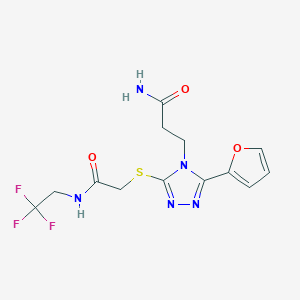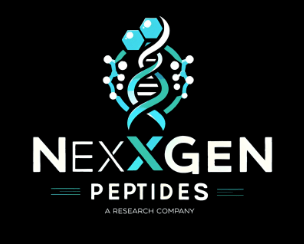BPC-157 10mg / TB-500 10mg = 20mg Blend Lypholized Power
$95.00
In stock
Description
BPC-157 10mg / TB-500 10mg – 20mg Research Peptide Blend (Lyophilized Powder)
Total Peptide Content: 20mg (BPC-157 10mg + TB-500 10mg)
Form: Lyophilized powder
Purity: ≥99% (HPLC)
Appearance: White to off-white lyophilized powder
Component Information:
1. BPC-157
- CAS Number: 137525-51-0
- Molecular Formula: C₆₂H₉₈N₁₆O₂₂
- Molecular Weight: 1419.54 g/mol
2. TB-500 (Thymosin Beta-4 Fragment 17-23)
- CAS Number: 77591-33-4
- Molecular Formula: C₂₁₂H₃₅₀N₅₆O₇₈S
- Molecular Weight: 4963.49 g/mol
Description:
This 20mg research blend contains equal parts BPC-157 (10mg) and TB-500 (10mg) in a lyophilized powder format, intended solely for controlled laboratory use. These two peptides have been individually studied in in vitro models for their activity in peptide signaling and molecular interaction research.
This blend is intended for non-clinical investigative purposes only, and may support advanced exploration of cell signaling mechanisms, biochemical modulation, and protein interactions in strictly in vitro environments.
Potential Research Applications:
- Peptide Pathway Modeling
- Cellular Protein Binding Studies
- Non-Human Experimental Assays
- In Vitro Signal Transduction Research
All applications are intended for scientific investigation only and not related to clinical or therapeutic use.
Storage & Handling:
- Store at -20°C for long-term preservation.
- Protect from light and moisture.
- After reconstitution, store at 2–8°C and use within a limited timeframe for laboratory research only.
⚠ FDA DISCLAIMER – FOR RESEARCH USE ONLY
This product is not approved by the U.S. Food and Drug Administration (FDA) and is not intended for human or veterinary use. It is for laboratory research purposes only, such as in vitro experimentation and analytical testing.
By purchasing this product, you confirm that:
- You are a qualified individual using it for authorized scientific research only.
- The product will not be used for any form of human or animal consumption or application.
- You understand and agree to comply with all applicable laws and regulatory requirements.
WARNING: Any use of this product outside of approved laboratory settings is strictly prohibited. Misuse may result in serious legal and safety consequences. NexXGEN Peptides LLC assumes no responsibility for misuse, misrepresentation, or unauthorized application.
Please review our full Terms of Service
Additional information
| Weight | 1 oz |
|---|
Related products
BPC-157 5MG (Research Purposes Only)
BPC-157 5mg – Research Peptide
Molecular Formula: C₆₂H₉₈N₁₆O₂₂
Molecular Weight: 1419.54 g/mol
CAS Number: 137525-51-0
Synonyms: Body Protection Compound-157, BPC 157
Purity: ≥99% (HPLC)
Appearance: Lyophilized powder
Description:
BPC-157 is a synthetic pentadecapeptide that has been examined strictly in laboratory settings for its role in peptide interactions and cellular response mechanisms. It is a research-grade compound that has been analyzed in in vitro models to explore its biochemical properties and molecular activity.
This peptide is not approved for human or veterinary use and has not been evaluated for safety or efficacy in humans. Any reference to studies involving biological interactions pertains exclusively to controlled laboratory research.
Intended Research Applications:
- Peptide-Protein Interactions: Investigated within in vitro laboratory models for its biochemical role.
- Cellular Studies: Examined under controlled experimental conditions to assess peptide dynamics.
- Regulatory Pathway Research: Studied for molecular activity in research environments.
Storage Conditions:
- Store in a cool, dry place, away from direct light and moisture.
- Recommended storage: -20°C for long-term stability.
- After reconstitution, store at 2-8°C and use within a limited timeframe.
⚠ FDA DISCLAIMER – FOR RESEARCH USE ONLY
This product is strictly for laboratory research purposes and is not approved for human or veterinary use. It has not been evaluated by the U.S. Food and Drug Administration (FDA) for medical, therapeutic, diagnostic, or dietary purposes.
By purchasing this product, you acknowledge and agree that:
- It is not intended for human consumption or administration in any form.
- It will only be used in compliance with all applicable laws and regulations.
- It is for in vitro research and laboratory experimentation by qualified professionals only.
WARNING: The use of this product in humans is strictly prohibited. Misuse may violate federal, state, or local laws. NexXGEN Peptides LLC assumes no liability for improper handling, use, or distribution.
For further details, please review our Terms of Service
BPC-157 / TB-500 5mg / 5mg
Cagrilintide 10mg (Lypholized Powder) Research Only – Nexxgen Peptides
Cagrilintide 10mg (Mixing Solution Sold Separately)
Cagrilintide Peptide Summary
Product Specifications: 10mg Lyophilized Powder (>99% purity) in 3ml vial. *Requires Reconstitution with solvent such as bacteriostatic water (Sold Here)* Appearance: Solid, white powder in 3mL glass ampule Chemical Formula: C194H312N54O59S2 PubChem CID: 171397054 Molecular Weight: 5999.72 g/mol Synonyms: Cagrilintide Storage: Store at ≤25°C, sealed, away from heat, light, and moisture. Concentration: ≥99% Disclaimer: This product is intended solely for laboratory research purposes. It is not suitable for consumption by humans, nor for medical, veterinary, or household purposes. Researchers should handle Cagrilintide with care and adhere to strict safety guidelines during experiments. Kindly review our Terms & Conditions before making a purchase. *Cagrilintide Structure
 Source: PubChem
Source: PubChem 












